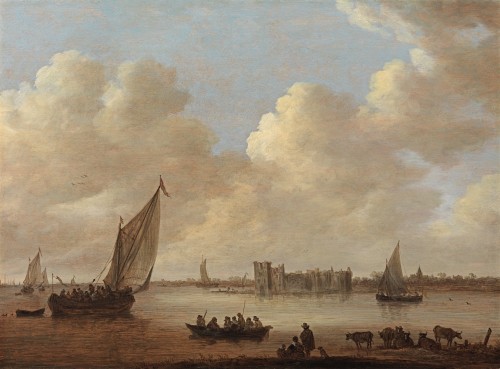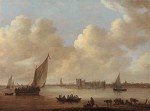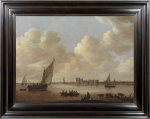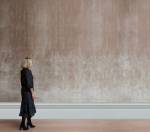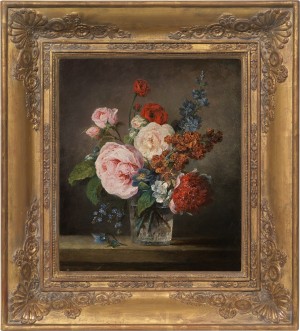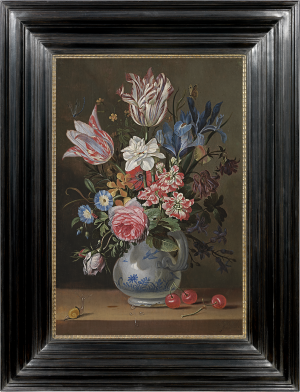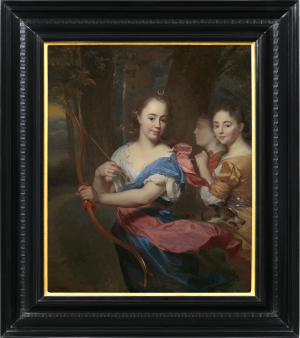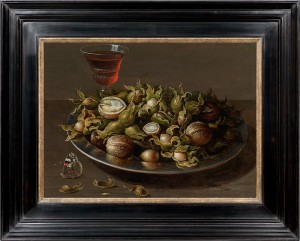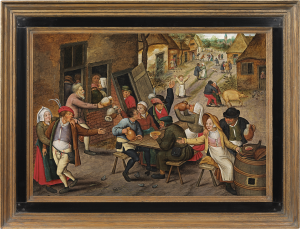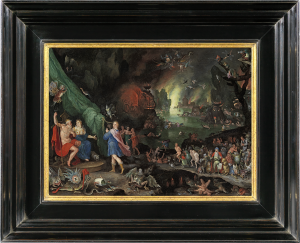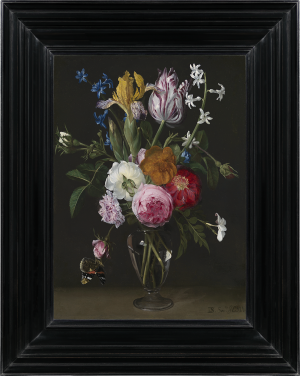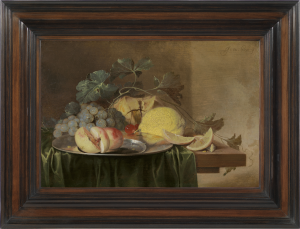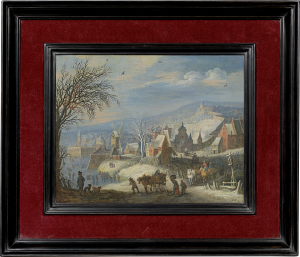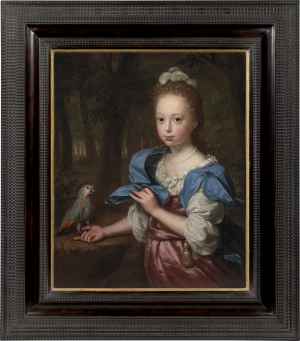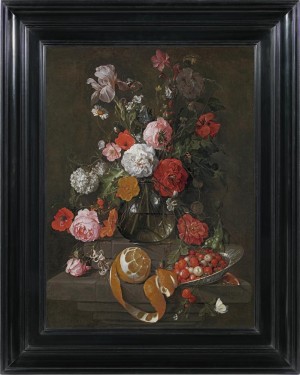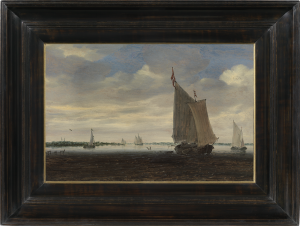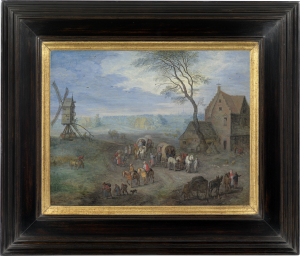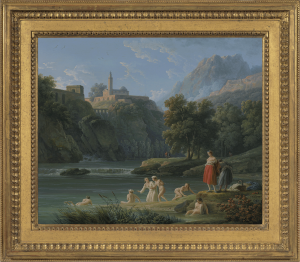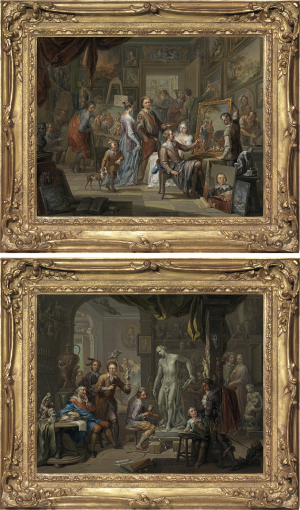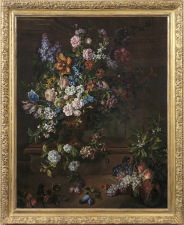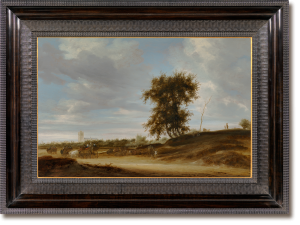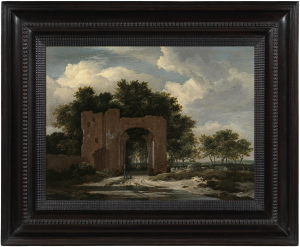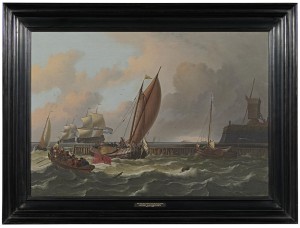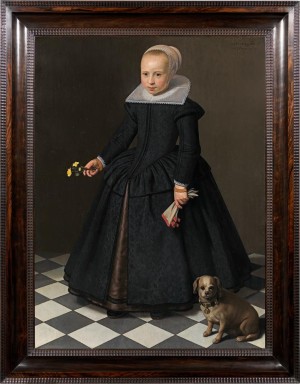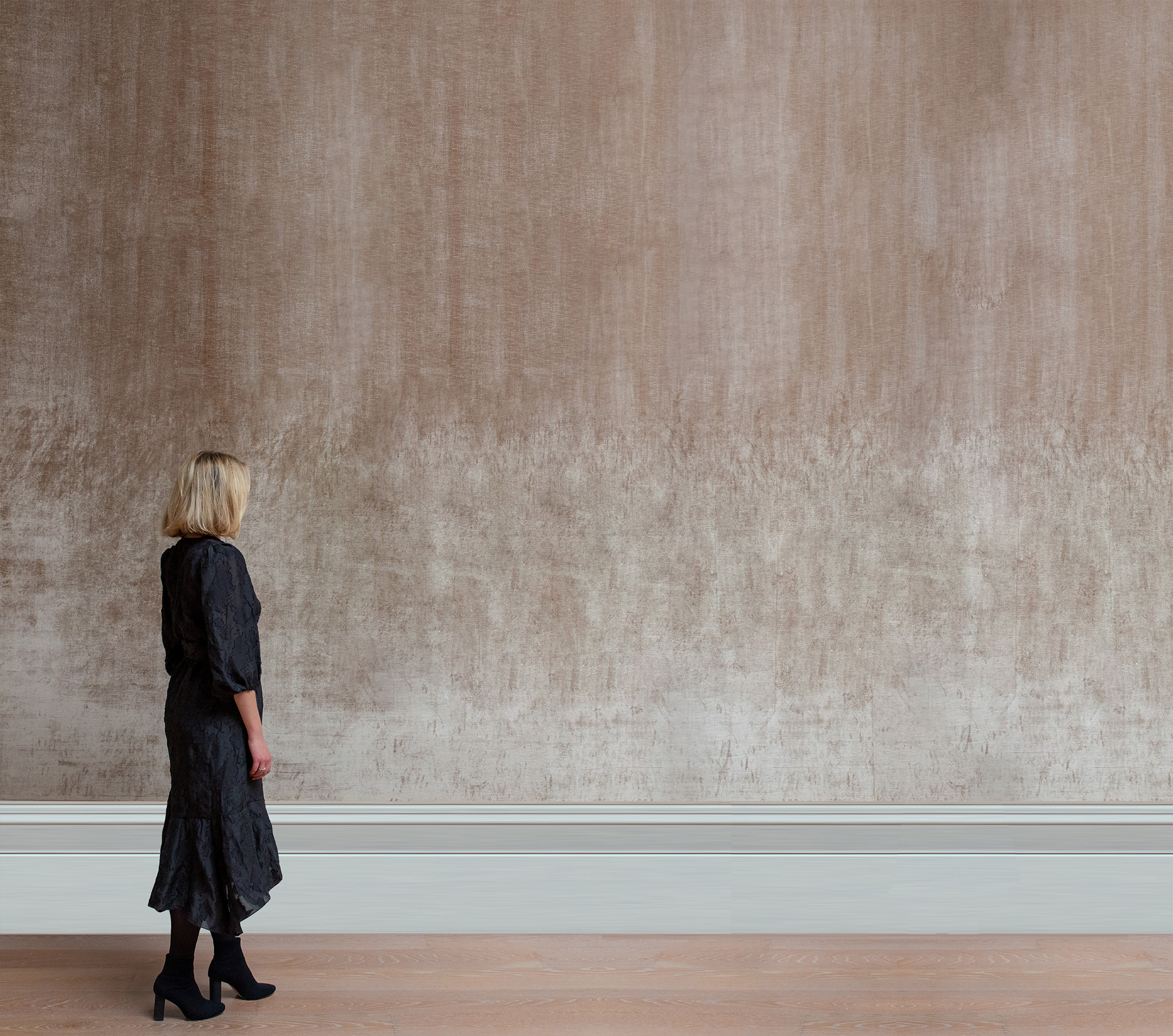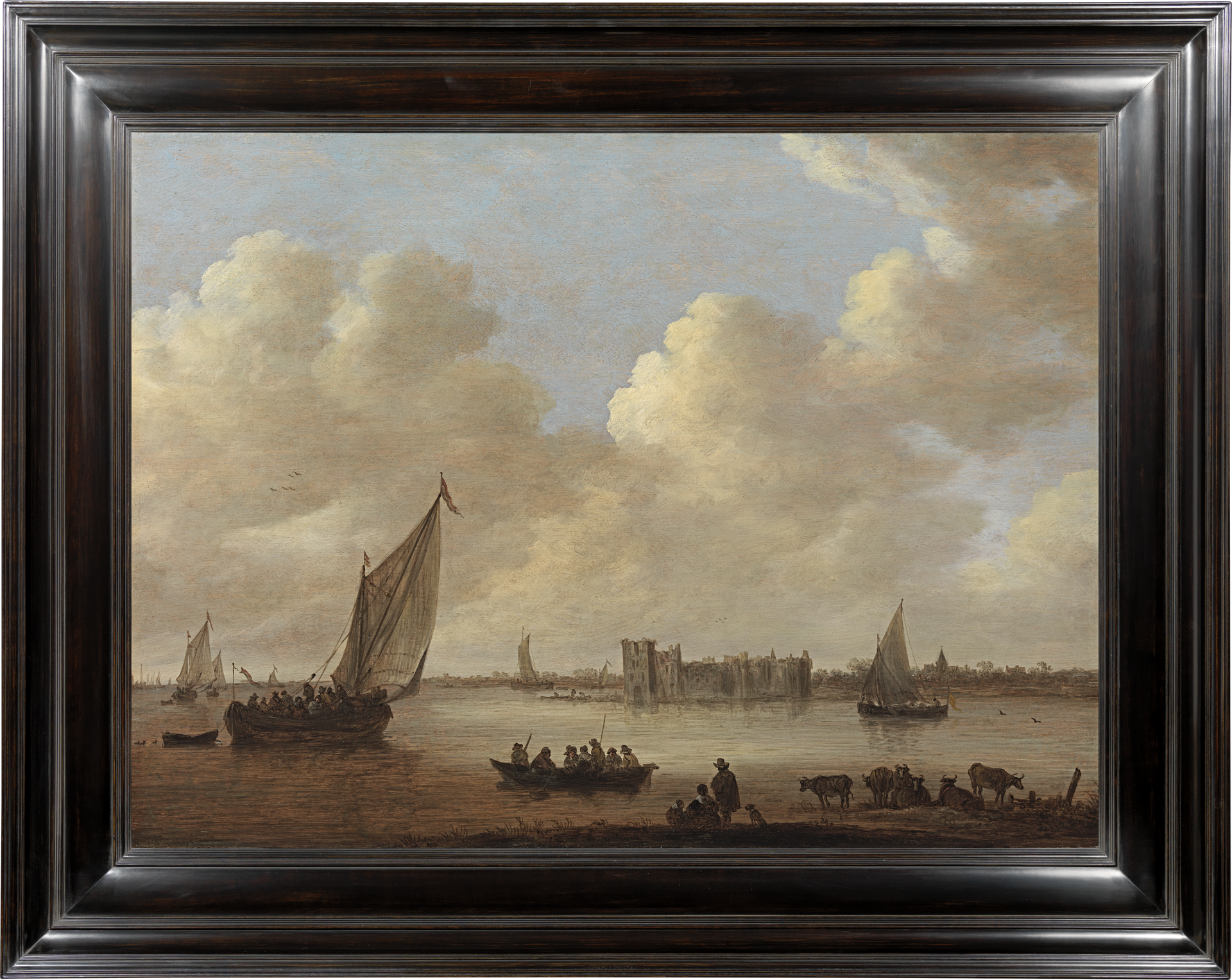Jan van Goyen
A view of Rupelmonde Castle on the Scheldt, with boats in the foreground
Oil on panel: 26.3 x 35.6 (in) / 66.7 x 90.5 (cm)
Signed with initials and dated 1651 lower centre: VG 1651
This artwork is for sale.
Please contact us on: +44 (0)20 7493 3939.
Email us
JAN VAN GOYEN
Leiden 1596 - 1656 The Hague
Ref: BZ 272
A view of Rupelmonde Castle on the Scheldt, with boats in the foreground
Signed with initials and dated lower centre: VG 1651
Oil on panel: 26 ¼ x 35 5/8 in / 66.7 x 90.5 cm
Frame size: 35 x 44 in / 88.9 x 111.8 cm
In a black polished Dutch seventeenth century style frame
Provenance:
Mrs Herbert E Jones, Hove, Sussex; her sale, Christie’s London, 27th May 1921, lot 30 (£378 to Peacock) A Buttery, London, 1924 J Goudstikker, Amsterdam, from whom purchased in 1925 by Jonkheer Christianus Theodorus Franciscus Thurkow (1882-1970), 1 Plein 1813, The Hague Christie’s London, 14th December 1990, lot 91;
where acquired by a private collector, Germany
Literature:
MF Hennus and C Veth (eds), ‘Tentoonstellingen’, Maandblad voor Beeldende Kunsten, vol. II, 1925, pp.318–19, illus. W Bernt, The Netherlandish Painters of the Seventeenth Century, London 1969, vol. I, fig. 445 (as River scene, with provenance incorrectly given as private collection, Lübeck) H-U Beck, Jan van Goyen 1596–1656, Amsterdam 1973, vol. II, p.322, no.705, illus.
Few artists have captured the spirit of the Netherlands, with its waterways mirroring huge skies, as well as Jan van Goyen. He could work effortlessly on every scale from small cabinet paintings to the expansive size employed here. Van Goyen was master of the ‘tonal’ landscape, using soft, gradated hues of brown and pale blue to conjure up the moisture-laden, wind-ruffled terrain. His works of the 1630s have a golden-brown hue. He returned to ‘tonal’ landscapes at the start of the 1650s, the era in which this view of Rupelmonde Castle was made. Strong, horizontal compositions are also characteristic of this phase, giving an airy sense of panorama.
Van Goyen travelled the length and breadth of the Netherlands throughout his career, making brilliantly atmospheric sketches in black chalk, which he used as inspiration for his oil paintings back in the studio. Sometimes, as here, his oils incorporate a recognisable topographical feature. In others, the combination of waterways, distant churches and cloud-fretted skies conjures up the essence of the northern Netherlands, without revealing a specific location. The deep love of the unassuming Dutch landscape sprang from a sense of national identity: the northern Netherlands had revolted against its Spanish Habsburg overlords in the 1560s. The conflict, although sporadic, was not resolved until the Treaty of Münster in 1648, three years before this painting was made.
Van Goyen travelled south to Antwerp and Brussels, the most important towns of the Spanish Netherlands, at the end of the 1640s. Rupelmonde Castle, which features in his black chalk sketches of c.1648 (Kupferstichkabinett, Dresden)[1], guarded the confluence of the rivers Rupel and Scheldt. The Scheldt is the key artery leading to Antwerp, then the Spanish Netherlands’s chief port, and a river of crucial strategic importance for centuries.
The imposing Rupelmonde Castle was built by the Counts of Flanders as a motte-and-bailey castle in the twelfth century[2]. In the mid-thirteenth century it was expanded to become a concentric fortress, formed by a hall keep, a curtain wall and semi-circular and square towers. In the second half of the fourteenth century, a new hall keep, called the Vierkant (Square) or Lood (Lead, referring to the lead covering the terrace) was constructed on the river side. This is the large structure on the left side of the castle in van Goyen’s painting. On the right side is the square gate tower, behind the curtain wall. The silhouettes of three other towers on the castle’s east side are visible to the right. There seem to have been fourteen in all.
The castle brings a strong horizontal emphasis to van Goyen’s composition, fluidly painted to evoke sunlight and shadow playing over windows, towers and walls. The castle levied a toll from passing ships. Van Goyen’s foreground is filled with a vivid sense of everyday life. The figures packed into the boats are painted with virtuosic delicacy with the brush tip, almost ‘drawn’ in oil paint, so that clothing, features and even personalities can be made out. The cows grazing by the river side are carefully grouped, in silhouette or face-on, for maximum emphasis against the silvery line of the river current. More than two-thirds of the composition, however, is occupied by the magnificent sky, with clouds spiralling from left to right, forming castles-in-the-air made radiant by the hidden sun.
Rupelmonde Castle was destroyed by Dutch forces in 1678, to prevent its being occupied by French invaders. It was subsequently used as a stone quarry. Today only the base of one tower survives, its silver-grey Tournai limestone surmounted by a tower of local red brick, built as a hunting lodge by Baron de Feltz in 1817.
A smaller view of Rupelmonde Castle by Jan van Goyen, dated 1650, is in a private collection[3].
Jan van Goyen, Two views of Rupelmonde Castle, p.60 from the Dresden Sketchbook, c.1648.
Black chalk: 5 ½ x 8 in / 139 x 204 mm. Kupferstichkabinett, Dresden.
Jan van Goyen, Rupelmonde Castle, signed and dated 1650. Oil on panel: 22 ¾ x 32 ½ in / 58 x 83 cm. Private collection, Stockholm, by 1973. Beck no.701.
Abraham Rademaker (1675-1735), Rupelmonde Castle, pen and brown ink and wash.
The remains of Rupelmonde Castle today.
JAN VAN GOYEN
Leiden 1596 - 1656 The Hague
Jan van Goyen was a prolific painter and draughtsman whose career spanned more than thirty-five years. During his early life he was influenced by Esaias van de Velde, the first Dutch painter to abandon the mannerisms of the Flemish style in favour of more naturalistic landscape views. He then began to paint in the new Haarlem landscape idiom, distinguished by its atmospheric quality and monochromatic palette, richly varied in tone. Van Goyen, Pieter de Molijn and Salomon van Ruysdael were the principal exponents of this style.
Van Goyen was born in Leiden in 1596 and from 1606 was the pupil successively of the Leiden painters Coenraet van Schilperoort, Isaac Claesz. van Swanenburgh, Jan Arentsz. de Man and the glass-painter Cornelis Cornelisz. Clock. He then studied for two years with Willem Gerritsz. at Hoorn. Van Goyen went back to Leiden and worked on his own; at the age of about nineteen he travelled in France for a year and from 1617-18 he was the pupil of Esaias van de Velde in Haarlem. Van de Velde strongly influenced the style of van Goyen’s early paintings from 1620 to 1626.
Van Goyen went to The Hague in 1632, where he acquired citizenship in 1634. During that same year he worked in Haarlem, painting in the house of Isaac van Ruysdael, the brother of Salomon. He was a hoofdman of The Hague Guild in 1638 and 1640, and in 1651 he painted for the Burgomasters’ Room in The Hague Town Hall a panoramic view of the town, for which he received 650 guilders. Despite his astounding rate of production, van Goyen was constantly beset with financial difficulties; he incurred great losses in the ‘tulipmania’ of 1636-7 and died insolvent.
The work of Jan van Goyen is represented in the National Gallery, London; the Fitzwilliam Museum, Cambridge; the Louvre, Paris; the Nationalmuseum, Stockholm; the Metropolitan Museum of Art, New York; the Museum of Fine Arts, Boston and the Rijksmuseum, Amsterdam.
[1] Beck, op. cit., vol. I, p.277, no.846/60, illus.
[2] We are very grateful to Kevin Poschet for details of the history and construction of the castle. See: Kevin Poschet, Geheimen van het Gravenskasteel. Rupelmonde van burcht tot Graventoren, Skribis 2018.
[3] Beck, ibid., vol. II, p.319, no.701, illus.

